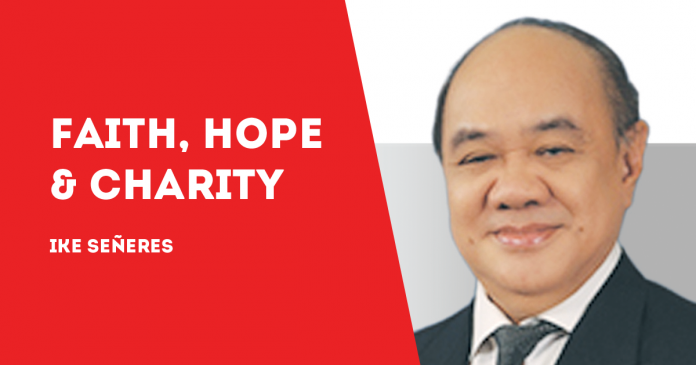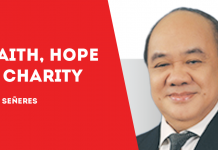
IT IS ALREADY a scientific fact that the Philippines is disaster-prone, and that a natural disaster is bound to happen sooner or later. It is only a matter of when and how, but it is bound to happen.
It is also a reality that we have to live with, and it should now become part of our day to day existence to prepare for it in our present times, at the same time that we should also prepare for what should eventually become of our country in the future.
As the saying goes, we have to be able to “walk and chew gum” at the same time.
Admittedly, it is already a huge challenge to prepare for the far future, but we now have no choice but to also prepare for the natural disasters that are sure to happen in the near future. Not that we do not have enough challenges to face, but because of our high poverty rate, we have many compatriots who are practically in a state of disaster in their day to day existence. The fact is that it is already happening to them in the immediate present, and not in the far future.
How are we as a country going to organize our time and allocate our resources so that all of these challenges could be met, in such a way that nothing is left out nor forgotten?
In my desire to establish rhyme and reason towards this goal, I drafted a framework that defines a “division of labor” between those who will be assigned to three clearly defined “clusters”, namely the “Rescue and Relief” cluster, the “Rebuild and Rehab” cluster and the “Support and Sustain” cluster.
As I have defined it, the first cluster is for short term, the second cluster is for medium term, and the third cluster is for long term.
In the process of implementation, the “Rebuild and Rehab” work should start before the work of the “Rescue and Relief” cluster ends, and the work of the “Support and Sustain” cluster should start before the work of the “Rebuild and Rehab” cluster ends.
In this overall framework, the charitable works and the works of mercy belongs to “Rescue and Relief”, the first cluster. This proceeds from the philosophy that those who are below the poverty line would also need “Rescue and Relief” on a day to day basis, because they are facing disasters every day.
Aside from their primary roles, the three clusters will also be assigned their own secondary roles. The “Rescue and Relief” cluster will also “Watch and Warn”; the “Rebuild and Rehab” cluster will also “Equip and Enable”; and the “Support and Sustain” cluster will also “Complete and Compete”.
Under these secondary roles, the third cluster will complete and wrap up everything that the first and second clusters have done. Not only that, the third cluster will also make sure that the local economies of the target communities will also be competitive.
Needless to say, the assignments of the three clusters will be community oriented at the microeconomic level, but in the final analysis, everything will add up as building blocks towards nation building at the top, at the macroeconomic national level.
Either down below or at the top, our local communities in particular and our country in general have to be climate safe, energy sufficient, food secure and water sufficient. With all the second words ending in the letter “s”, this would be easy to remember.
Who would ever think that climate safety, energy sufficiency, food security and water sufficiency would actually be interrelated with each other? To begin with, water is life, and without it, everything will die.
Aside from that, energy powers everything, and without it, nothing will move. It may not be too obvious, but the common denominator between water and energy is the environment. If we take good care of our environment, we could have a continuing supply of clean water. With clean flowing water, we could also produce energy.
The cycle goes on, because if we have water, we could produce not just food, but also renewable energy from bio-fuels. However, the cycle should start with rain collection, solar collection and recyclable collection. This would also be easy to remember, because it is all about collection./PN





